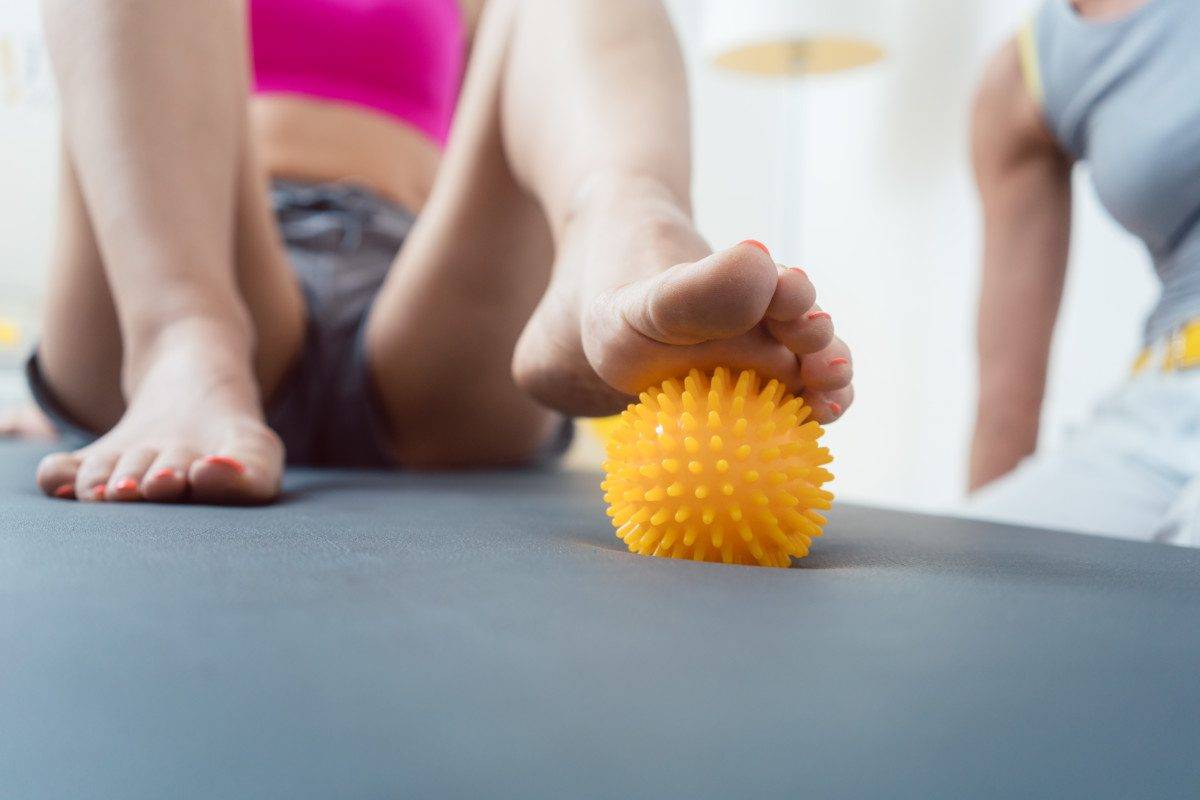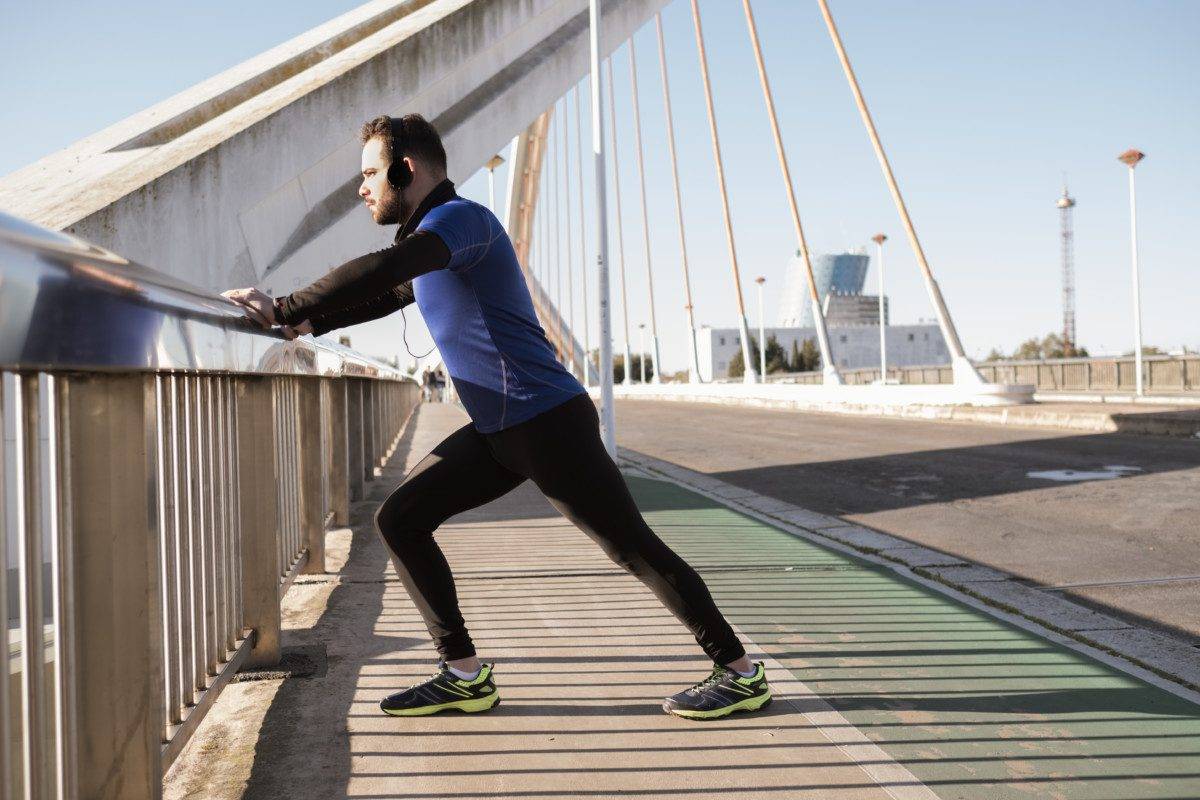By Dr. Jessica Fitzpatrick, DC
Our feet play a critical role in our ability to move, as they act as the primary connection for our bodies to the ground. There are 26 bones, 33 joints, and over 100 tendons in each of our feet that together enable our ability for standing stability, balance, and mobility. Occasionally, problems can develop within these entities that can lead to foot pain as well as injuries in the ankle, knee, hip, and even the pelvis and low-back. We call this a ‘closed kinetic chain’ as whatever biomechanical (movement of the body) factors are in play at the foot will subsequently impart a change in biomechanics at the joints and tissues all the way up the lower limbs. I could write about the many conditions that can occur in the lower limbs as a result of foot/ankle biomechanical problems, but for the purpose of this article, let’s focus on conditions that lead to problems directly in the foot, specifically in the heel.

One of the most common presentations of pain I see in practice is at the heel. The heel, or calcaneus, is the largest bone in the foot. There are a number of conditions that can cause heel pain, but the two most prevalent conditions I diagnose are plantar fasciitis and calcaneal fat pad syndrome (CFPS). These two conditions can present quite similarly and as such are often misdiagnosed as plantar fasciitis even though they are truly CFPS, and vice versa. Plantar fasciitis is the most common source of heel pain and often has been described as walking on a pebble. Plantar fasciitis is pain primarily located at the bottom of the heel and is typically worse first thing in the morning or after prolonged periods of sitting or rest. After walking around for a while, the pain usually starts to subside but then can worsen after extended periods of weight-bearing activity.
The plantar fascia itself is composed of thick connective tissue that extends from the heel to the base of the toes. Its purpose is to support the arch of your foot and act as a shock absorber for any weight-bearing activities. The pain associated with plantar fasciitis is often described as both dull and achy as well as sharp and burning when at its worst. The pain is isolated to the inside front of the heel but can radiate into the mid-arch as well. Plantar fasciitis has long been thought to be the result of inflammation of the fascia however more recent research has shown that degeneration or weakening and small tearing of the fascia is more likely the primary cause. Heel spurs are often associated with plantar fasciitis however they don’t by default go together. The constant deterioration and irritation of the plantar fascia can create irritation of the heel bone and can develop in 50% of plantar fasciitis cases.

Another common source of heel pain is calcaneal fat pad syndrome (CFPS). The heel’s fat pad is a thick, 1-2 cm layer of fatty tissue that is surrounded by fibrous connective tissue that sits immediately under the heel bone. The purpose of this pad is to act as a shock absorption cushion to protect the bones and joints of the feet. Wear and tear of this fat pad or walking/running on hard surfaces can gradually cause it to lose its elasticity and ability to absorb the impacts of daily activities. This can lead to inflammation of the fat pad, which in turn, causes the fat pad to enlarge and push out under the edges of the calcaneus. Weight bearing activity will then continue to irritate the fat pad as the edges of calcaneus ‘pinch’ down on the inflamed fat pad with every step. The pain associated with this condition is typically described as broad around the heel and will often worsen immediately with sustained walking or running (where pain decreases with plantar fasciitis after the first few steps of activity).
This wear and tear of both the plantar fascia and the fat pad are generally attributed to several factors including:
- Poor foot biomechanics resulting in excessive or forceful heel striking
- Aging. The heel pads have a tendency to lose their elasticity over time and the plantar fascia develops small tears.
- Poorly fitted or unsupportive footwear which does not allow the foot biomechanics to function optimally
- Carrying extra body weight, as can increase the stress placed on both the fat pad and plantar fascia
- Repetitive, bounding activities such as gymnastics, where the athlete landing with multiple times their body weight placed on their feet.
- Prolonged standing, walking, or running on hard surfaces such as a concrete floor or asphalt running surface.
- Certain health conditions have also been shown to contribute to atrophy of the heel pad such as diabetes.

There are many measures we can take to help minimize the risk of either of these conditions from occurring.
- Wear well-supportive footwear as well as activity-appropriate footwear.
- Replace footwear at appropriate intervals of time and/or usage.
- Maintain a healthy diet and weight to avoid excessive stress on your feet.
- Rest. Both of these conditions can start from a lack of recovery time for your tissues.
- Ease yourself into new or more intense activity or changes to incline or terrain
- Make use of an anti-fatigue mat when standing for prolonged periods
- Stretch!
Seated foot & toe extension
Calf stretches on step
Gastrocnemius stretches against a wall
Soleus stretches against a wall
Walking the dog - Roll your arch and calf with a squash ball post activity, pre-stretching (avoiding bony attachments)

If you have struggled with foot/heel pain and have tried various options, having your foot biomechanics assessed by a qualified healthcare professional to determine if orthotics or other corrective devices may be warranted is a step that may be of benefit to you. Upward 70% of the population overpronate or over-supinate at the ankle and forefoot. Both of these biomechanical aberrations can make people more prone to developing these conditions, but not always! Unless there has been a specific change or injury that might have led to these aberrant ankle/foot biomechanics, it is unlikely that biomechanics that differ from the ‘standard’ foot/ankle are the cause of your heel condition. The most elite marathon runners in the world have extreme overpronation of their ankles and feet yet they run thousands of miles every year without issue, sometimes even barefoot! The value of a sound diagnosis is the key to being educated on proper management strategies, determining an effective treatment plan for quick, permanent results, and getting you back to the activity or sport that you love!

